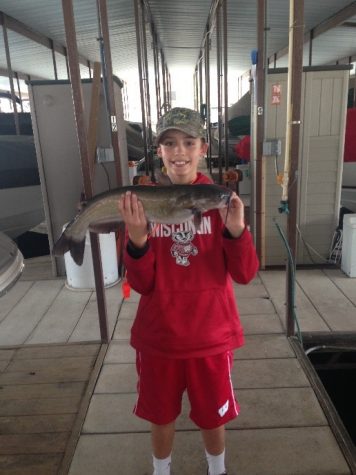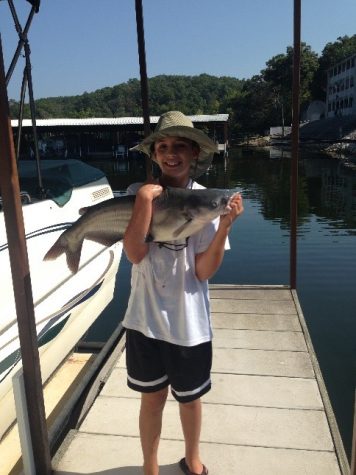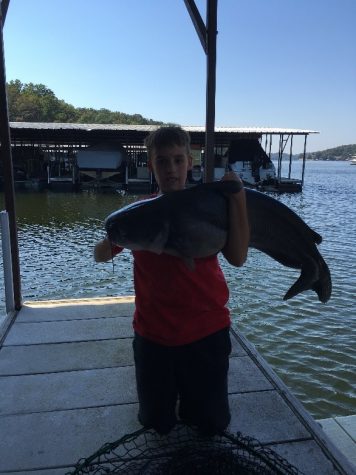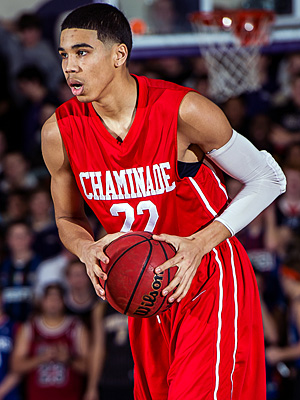Where to Find Them
At the Lake of the Ozarks, we are lucky to have many catfish. Catfish grow to great sizes and put up a formidable fight. Catfish are sometimes deemed a “trash fish” or “bottom feeder”, but most catfish feed on live schooling baitfish or other types of forage fish.
Our lake has three types of catfish: channel catfish, blue catfish, and flathead catfish. They all have different feeding  patterns and reside in different locations in the spring. Channel catfish are the smallest of the three catfish. They are also the most abundant and easiest to catch. Channel catfish are scavengers. They will comb the bottom of the lake to find food. You will normally find channel catfish wherever you can locate a food source. In our lake, the common food source is shad. As channel catfish are scavengers, you will ideally find them un
patterns and reside in different locations in the spring. Channel catfish are the smallest of the three catfish. They are also the most abundant and easiest to catch. Channel catfish are scavengers. They will comb the bottom of the lake to find food. You will normally find channel catfish wherever you can locate a food source. In our lake, the common food source is shad. As channel catfish are scavengers, you will ideally find them un der the school of bait.
der the school of bait.
Blue catfish are the largest type of catfish. They also live in the deepest of water. Blue catfish are categorized as open water predators. This means that they spend most of their time in the main channel but will move shallower when the food source moves. Spring blue catfish will be at a similar level as the school of bait that you find. Small to medium sized blue catfish hunt in groups, so don’t be surprised to double-up. Blue catfish of all sizes are both tasty and very fun to catch.
Flathead catfish are the most territorial and least abundant type of catfish. They will reside most of the year in heavy cover. During spring, flatheads are trying to stock up food after a long winter. You may find them in any area that has heavy brush and may hold baitfish. Flatheads are also the most predatory of the three catfish, and they will normally take live bait. The spring Flathead action starts to turn on in the moderately shallow water around April because they are beginning pre-spawn.
During the spring, all catfish begin to move shallower to feed on the shallow flats. Most docks provide both cover and structure that baitfish can use. This is where my favorite phrase in catfishing really applies. “If you find the bait, you find the fish.” This phrase means that all species of catfish will follow the shad patterns, making catfish very predictable in all seasons.
How to Catch Them
Catching channel catfish off docks is normally easy. When you fish for channel catfish, find a type of cover or structure in about 15- 30 feet of water that leads to a shallow flat or a point. Here, you will use a small piece of cut shad or bluegill on a 3/0 Team Catfish double action hook. Cast you line on the edge of the structure so the catfish will find the bait easily. In a similar way, you can use dip bait on a treble hook to catch channel catfish. When fishing for channel catfish I use a basic bottom rig or Carolina rig. When fishing off docks always use slightly heavier gear than you would on open water.
When fishing for blue catfish from docks, find heavy cover located near the longest dock in the set or the corner of the dock. These special locations act as secondary points for the baitfish to congregate near. These schools of bait fish attract the catfish. I fish for blue catfish with very heavy gear because of the abundance of snags. I use 30-65 pound test mainline and leader of a similar pound range. For blue catfish, I use an 8/0 circle hook with a chunk of cut shad. For blue catfish I normally use a Santee-Cooper rig to lift my bait off the bottom. I cast my line to any cover or structure. The location that I fish in the spring is very similar to channel catfish but slightly shallower.
Fishing becomes tricky when targeting flatheads off docks. Flatheads do not feed very often, as they would rather take a very large meal than many small ones. Flatheads are also normally tucked into the heaviest cover that you can find. To fish heavy cover, make a drop-shot rig with a 3-ounce weight and an 8/0 circle hook. Bait the hook with a lively bluegill or green sunfish. This rig helps keep the baitfish in place, so it does not snag your line. As an extra tip, do not start fishing for flatheads until the bass begin to make beds. In mid to late spring flatheads are very exciting to hook.
Early spring is notorious for cold fronts that can throw off the fishing for days. Even during cold fronts, some docks still produce catfish. When the air is cold, and the fishing is slow, catfish tuck themselves in to the heaviest cover that they can find. If the catfish are in shallow water, they will also retreat to deeper water. Cold fronts also slow the fish’s metabolism. When their metabolism is slow, they do not need as much food to survive. To appeal to the fish, downsize your hooks and sizes of bait significantly. For example, for blue catfish use sizes of bait that would normally catch channel cats. During cold fronts, flathead catfish get completely turned off.
To catch cold front catfish from the docks, take into consideration the effects that cold fronts have on your target species. Try to locate the thickest or largest brush pile or down tree in your range. Downsize your hooks and bait size but upsize your line and weight to prevent from snags. A heavy rod will help pull larger fish out of thick cover. If you use some special techniques, you can still catch catfish from the docks during cold fronts.
Catfish are one of if not the hardest fighting fish in our lake. Even though many people feel that dock fishing for catfish is just a summertime sport, it can be done year-round. Docks provide cover and structure that serves as a hiding place for both predator and prey alike. During springtime, docks are an excellent location to find all species of catfish.













